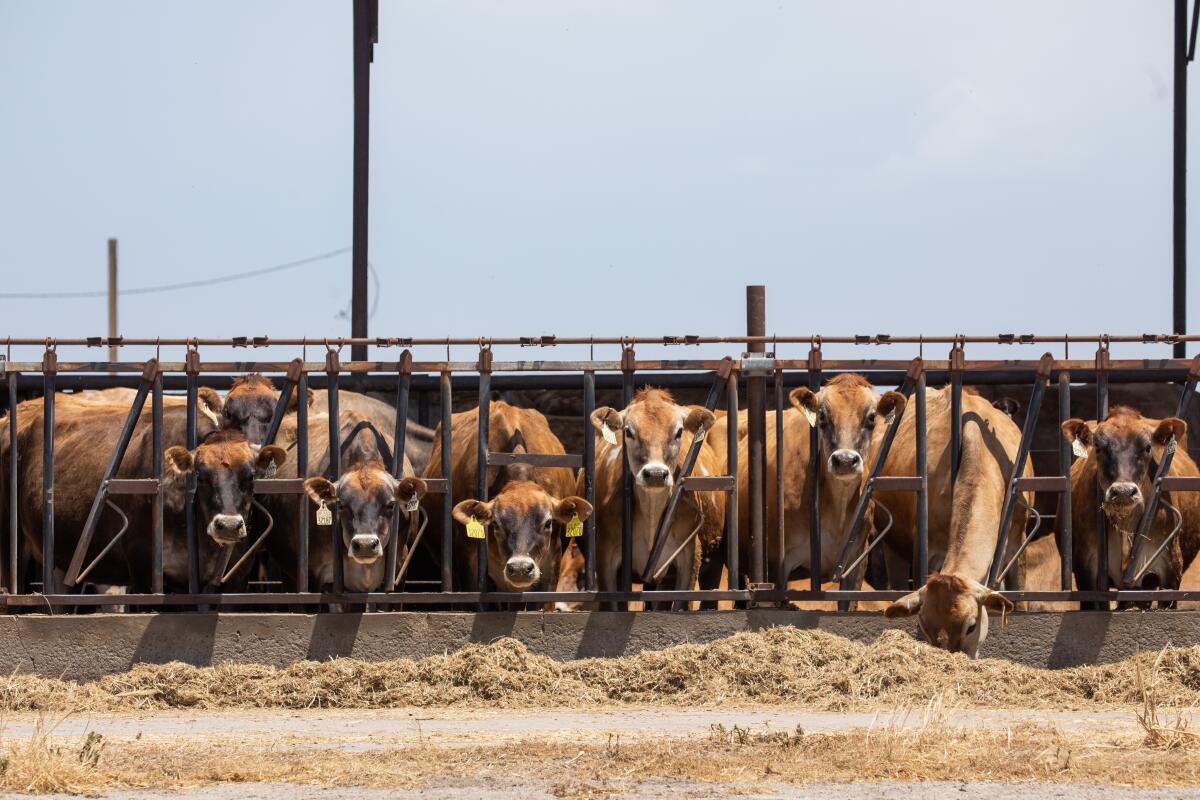
California officials have ordered bulk milk testing for dairy farms within six miles of herds infected with H5N1 bird flu, as well as for dairies that share trucks, personnel or equipment with facilities that have suffered an outbreak.
The mandatory testing comes as the total number of infected herds in California has risen to 17. Nationally, officials have announced 218 outbreaks across 18 states. In the last 30 days, however, California has accounted for all but two of the latest outbreaks.
Officials are still not disclosing the location of these herds, except to say they are somewhere in the Central Valley. They also say that the nation’s milk and dairy supply is safe for consumption; pasteurization inactivates the virus.
When officials perform bulk testing, they examine the combined milk output of several cows on a farm. If that testing reveals H5N1 virus, more precise testing is performed to locate infected cows or sub-herds for isolation.
The state is quarantining all farms where H5N1 is present or that refuse testing. It is also quarantining dairy farms within six miles of an infected herd or have contact with an infected herd.
“To date, all dairies have been cooperative,” said Steve Lyle, a spokesman for the California Department of Food and Agriculture. Officials have the authority to require testing under state law, he said.
Nearly 100 farms are being tested, Lyle said.
In addition to the herd infections, a commercial turkey flock was also reported to have suffered an outbreak of H5N1 on Sept. 18. The number of turkeys in the flock has not yet been disclosed.
Federal and state officials have publicized county-level data for commercial poultry infections, but not for cattle.
John Korslund, a retired U.S. Department of Agriculture veterinarian epidemiologist, who writes online about livestock diseases, worried that California could soon find itself in a situation similar to Colorado.
Between May and August, 64 Colorado herds were infected, as well as six poultry workers.
Colorado has roughly 100 dairy herds and around 200,000 dairy cows. California has 1,300 dairy herds and roughly 1.7 million cows.
“The problems in California are just beginning,” Korslund said.
Wastewater testing by both the Centers for Disease Control and Prevention and WastewaterScan — an infectious disease monitoring network — have detected H5N1 virus in samples collected from Turlock and San Diego.
Health officials say they cannot identify the source of H5N1 in wastewater, noting it could be from dumped milk or wild animals.
The CDC and WastewaterScan test only a few wastewater sites in the Central Valley, including in Placer, Yuba, El Dorado and Sacramento counties. However, there are only two sites farther south in Merced and Stanislaus counties. There are no participating wastewater sites from Fresno, Kings, Tulare, Kern, Madera or San Joaquin counties.
Ninety percent of dairy cows in the state are located in the San Joaquin Valley, which includes San Joaquin, Stanislaus, Merced, Kings, Madera, Fresno, Tulare, and Kern counties. Thirty percent of the state’s dairy farms are in Tulare County.